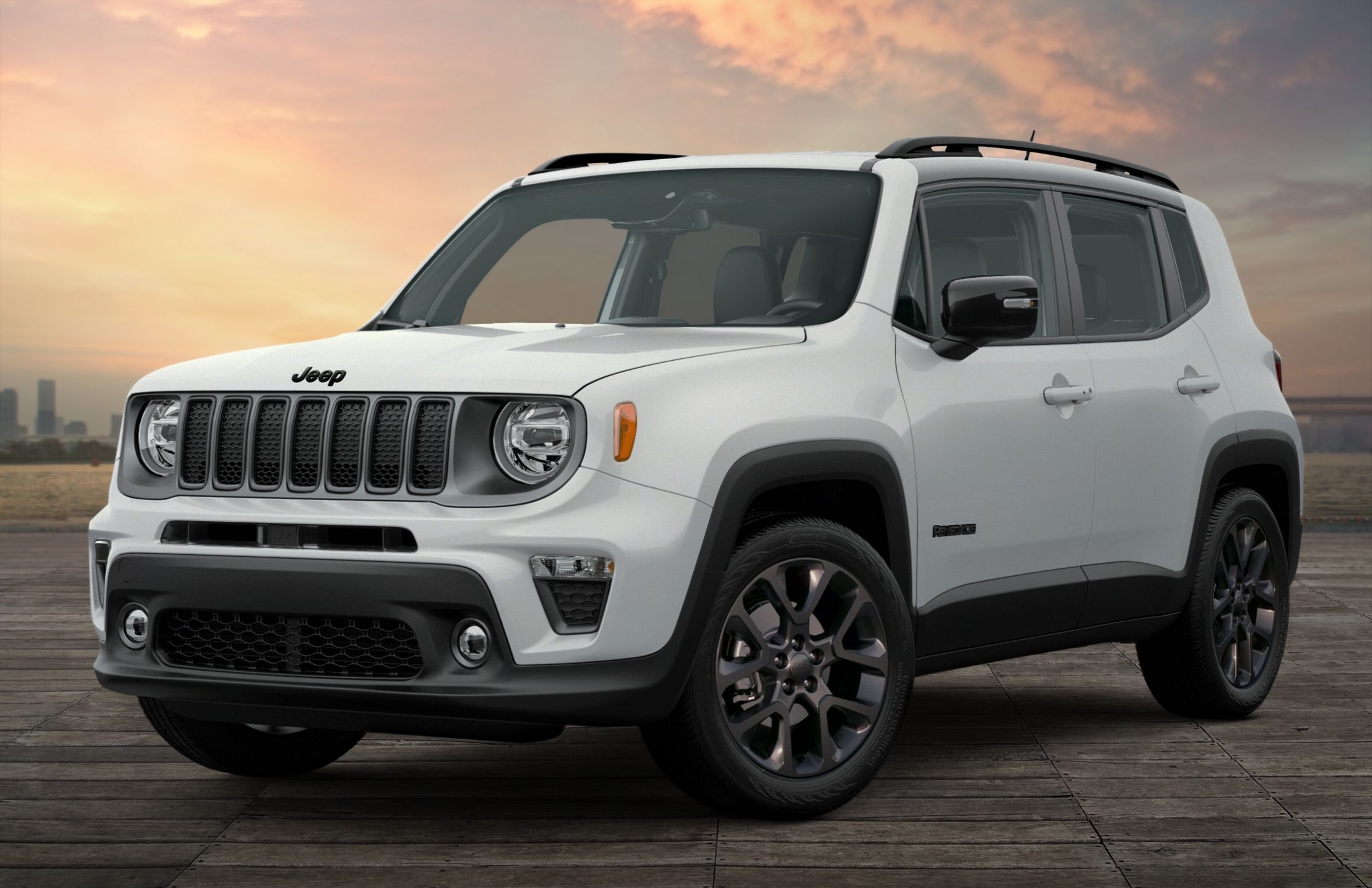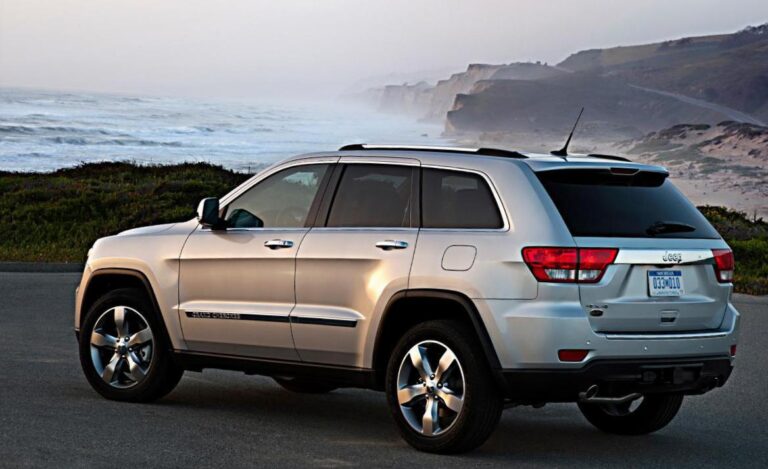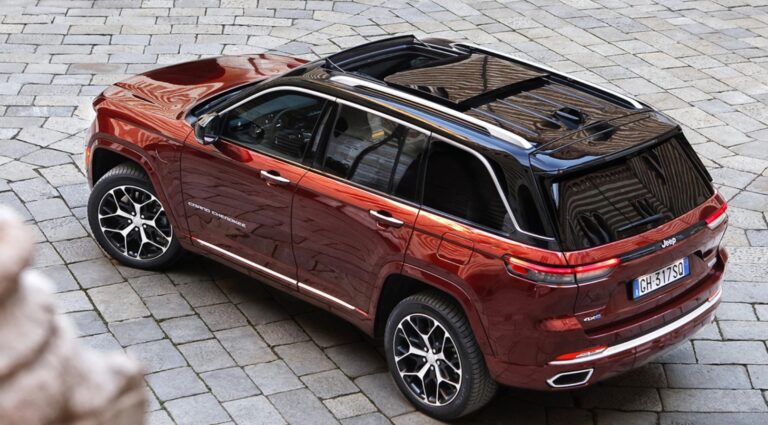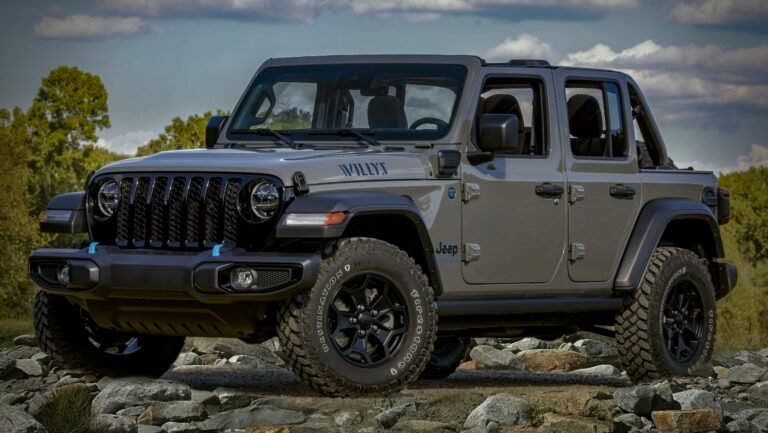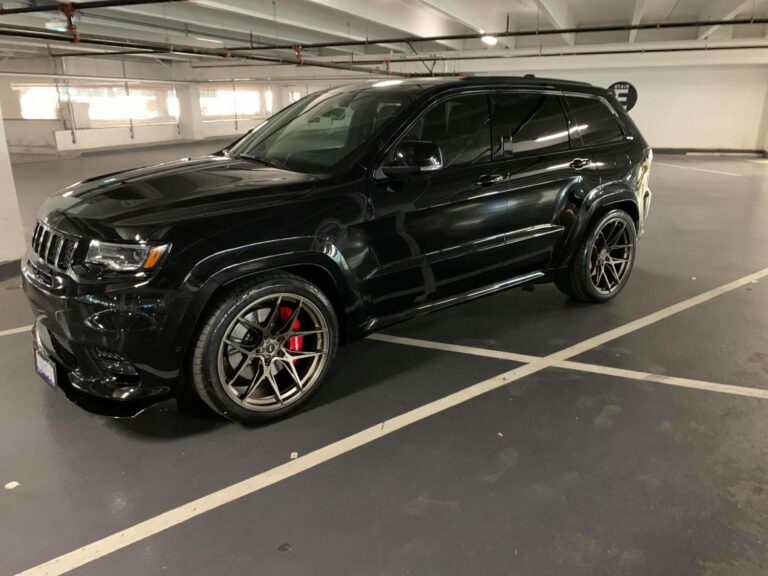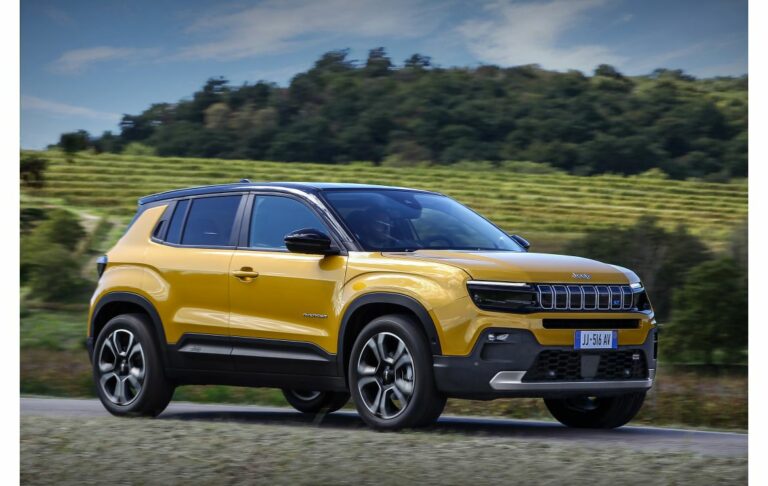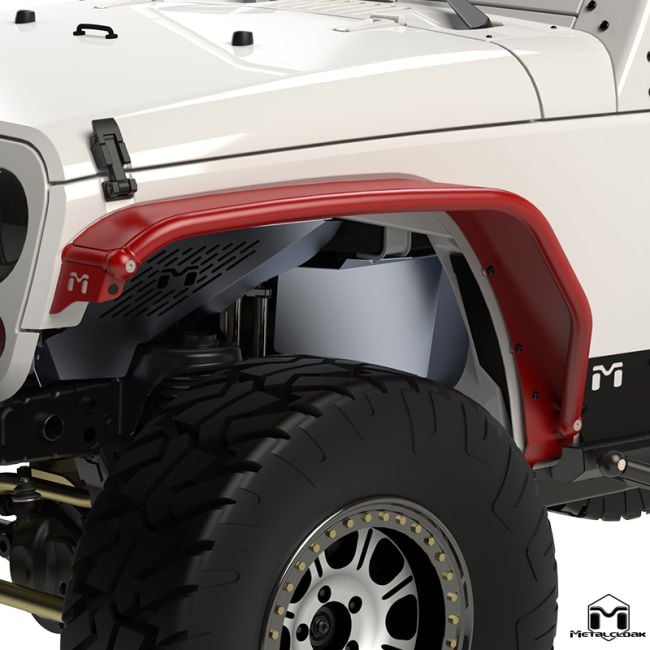Jeep Cummins 4BT For Sale: Your Ultimate Guide to Diesel Power in a Wrangler
Jeep Cummins 4BT For Sale: Your Ultimate Guide to Diesel Power in a Wrangler jeeps.truckstrend.com
The roar of a diesel engine, the relentless pull of low-end torque, and the promise of exceptional fuel economy – these are just some of the reasons why the Cummins 4BT engine has become a legendary choice for Jeep enthusiasts looking to transform their rigs. A "Jeep Cummins 4BT For Sale" isn’t just an item on a classifieds list; it represents an opportunity to own a vehicle that combines the iconic capability of a Jeep with the robust, efficient power of a commercial-grade diesel powerplant. This comprehensive guide will delve into everything you need to know about these sought-after machines, from understanding the engine itself to navigating the buying process and the potential challenges of ownership.
Understanding the Cummins 4BT Engine: A Compact Powerhouse
Jeep Cummins 4BT For Sale: Your Ultimate Guide to Diesel Power in a Wrangler
At its core, the Cummins 4BT is a 3.9-liter, inline four-cylinder, direct-injected, turbocharged diesel engine. Derived from the larger and equally legendary 6BT (the engine found in many Dodge Ram trucks), the 4BT was originally designed for commercial applications like bread trucks, delivery vans, and industrial equipment. This heritage is precisely what makes it so appealing for Jeep swaps:
- Compact Size: Being a four-cylinder, it’s significantly shorter than its six-cylinder counterpart, making it much easier to fit into the cramped engine bays of Jeeps like the Wrangler (YJ, TJ, JK), Cherokee (XJ), or older CJs.
- Exceptional Torque: Despite its relatively small displacement, the 4BT is a torque monster, typically producing between 105-120 horsepower and a stout 265-300 lb-ft of torque in stock form. This low-RPM grunt is invaluable for off-roading, crawling, and towing.
- Fuel Efficiency: One of the primary drivers for a 4BT swap is the dramatic improvement in fuel economy. Owners often report mileage in the 20-30+ MPG range, a significant upgrade over gasoline V6 or V8 engines.
- Durability and Reliability: Built for continuous commercial duty cycles, the 4BT is renowned for its longevity and robust construction. With proper maintenance, these engines can easily last for hundreds of thousands of miles.
- Moddability: Like its 6BT sibling, the 4BT responds very well to performance modifications, allowing enthusiasts to extract even more power and torque.

There are primarily two common variants of the 4BT found in swaps: the VE-pumped versions (simpler, mechanically controlled) and the P-pumped versions (more desirable for performance, found in later models). Understanding which version you’re looking at can influence both cost and potential performance.
The Allure of a 4BT-Swapped Jeep: Why the Hype?
The popularity of a "Jeep Cummins 4BT For Sale" isn’t just a fleeting trend; it’s rooted in tangible benefits that transform a Jeep into an even more capable and unique vehicle:
- Unmatched Off-Road Performance: The abundant low-end torque allows for precise throttle control and effortless climbing over obstacles, often without needing to rev the engine high. This translates to less stress on the drivetrain and a more controlled off-road experience.
- Significant Fuel Savings: For daily drivers or overlanders, the improved fuel economy translates directly into lower operating costs and extended range, especially appealing on long trips.
- Legendary Cummins Reliability: Knowing you have an engine designed for commercial abuse under your hood provides immense peace of mind, especially when venturing far from civilization.
- Towing Prowess: While Jeeps aren’t known for being towing champions, a 4BT swap significantly boosts their capability, making them much more adept at hauling trailers, boats, or other gear.
- Unique Factor and Resale Value: A well-executed 4BT swap makes a Jeep stand out from the crowd. These custom builds often command higher resale values due to the investment in parts and labor, and the specialized appeal to a niche market.
- Reduced Maintenance (Long-Term): Diesel engines, particularly those built for commercial applications, are designed for long service intervals and fewer complex components than modern gasoline engines, potentially reducing long-term maintenance headaches.
Finding Your Jeep Cummins 4BT For Sale: Options & Approaches
When searching for a "Jeep Cummins 4BT For Sale," you generally have three main avenues:
-
Complete Swapped Vehicle (Turn-Key):
- Pros: This is the easiest route to immediate gratification. The work is already done, and ideally, the vehicle has been tested and debugged. You can inspect the finished product and potentially test drive it.
- Cons: Higher upfront cost. The quality of the swap can vary wildly depending on the builder’s expertise. You’re buying someone else’s project, and potential hidden issues might arise.
- Where to Look: Specialized online forums (e.g., Pirate4x4, specific Jeep/diesel forums), Facebook Marketplace, dedicated off-road vehicle classifieds, specialty dealerships.
-
Buying a Standalone 4BT Engine for a DIY Swap:
- Pros: Most cost-effective way to acquire the engine itself. Allows for complete customization of the swap to your exact specifications. You know the quality of every component going into your build.
- Cons: Requires significant mechanical skill, time, and specialized tools. You’ll need to source all the ancillary parts (transmission adapter, motor mounts, cooling system, wiring, etc.)
- Where to Look: Junkyards, industrial engine suppliers, online marketplaces (eBay, Craigslist), diesel specific parts dealers. Often, these engines come from decommissioned bread trucks or generators.
-
Purchasing a Donor Vehicle (e.g., Old Bread Truck):
- Pros: Potentially the cheapest way to get a complete, running 4BT engine, often with a compatible transmission and other useful parts (e.g., power steering pump, vacuum pump). You can hear the engine run before buying.
- Cons: You’re buying a whole vehicle that you’ll need to strip down and then dispose of. This requires space and effort. The engine might be high mileage or require significant overhaul.
- Where to Look: Local auctions, government surplus sales, commercial vehicle classifieds, or even just driving around industrial areas looking for old, out-of-service trucks.
Key Considerations Before Purchase
Before you commit to a "Jeep Cummins 4BT For Sale" – whether it’s a complete vehicle or just the engine – a thorough evaluation is paramount:
- Engine Condition: For a standalone engine, ask for videos of it running. Check for excessive smoke (blue for oil, white for coolant/fuel, black for rich fuel mix), strange noises, oil leaks, and excessive blow-by (remove oil fill cap while running – a little puff is normal, a constant stream is not). If possible, get a compression test or oil analysis. For a swapped Jeep, inquire about service history, recent maintenance, and how many miles are on the engine post-swap.
- Engine Variant (VE vs. P-Pump): VE-pumped engines are simpler and generally cheaper, offering good reliability. P-pumped engines (like the 4BT found in some Frito-Lay trucks) are more robust, offer greater fueling potential for performance, but are often more expensive.
- Transmission Compatibility: The 4BT has a distinct bell housing pattern. Most swaps use adapters to mate it to common Jeep transmissions (e.g., AX15, NV3550, NV4500, or automatic options like the 4L80E). Ensure the transmission is up to the task of handling the diesel’s torque.
- Axle and Drivetrain Strength: The 4BT’s torque can quickly expose weaknesses in stock Jeep axles, differentials, and driveshafts. Be prepared for potential upgrades to handle the newfound power, especially if you plan on heavy off-roading or larger tires.
- Cooling System: Diesel engines run hotter than gasoline engines. Ensure the cooling system (radiator, fan, intercooler) is adequately sized for the 4BT. Overheating can quickly damage a diesel.
- Vibrations: The 4BT is an inline-four and inherently produces more vibrations than a V6 or V8. A well-executed swap will incorporate fluid-filled motor mounts (e.g., from Ford F-series trucks), a balanced flywheel/flexplate, and potentially a balanced crank to mitigate this. Be prepared for some level of vibration, which can be amplified in a lightweight Jeep chassis.
- Legal & Emissions: This is critical. Research your local and state laws regarding engine swaps and diesel conversions. Some states have strict emissions testing that a vintage diesel might not pass without significant modifications. Older Jeeps (pre-1996) often have fewer restrictions.
- Budget Beyond the Engine: Factor in the cost of a transmission adapter, custom motor mounts, exhaust system, fuel lines, wiring harness modifications, potentially a new radiator, intercooler, and any necessary drivetrain upgrades.
The Swap Process: A Glimpse
While this article focuses on buying, it’s helpful to understand the scope of a 4BT swap:
- Engine & Transmission Mounting: Custom motor mounts and transmission cross members are almost always required.
- Fuel System: Diesel engines require a robust fuel delivery system, including a lift pump, filter, and return line.
- Cooling System: A large, efficient radiator and often an intercooler are essential.
- Exhaust System: Custom fabrication is typically needed.
- Wiring & Gauges: Integrating the engine’s electrical system with the Jeep’s, and ensuring all gauges (oil pressure, water temp, tachometer) function correctly.
- Power Steering & Brakes: Adapting the 4BT’s accessory drive to power the Jeep’s systems.
Tips for a Successful Acquisition & Swap
- Do Your Homework: Join online forums (like Cummins Forum, 4BT Swaps, Jeep-specific forums). Read build threads, ask questions, and learn from others’ experiences.
- Inspect Thoroughly: Whether it’s a complete vehicle or an engine, inspect it meticulously. If you’re not mechanically inclined, hire a trusted diesel mechanic for a pre-purchase inspection.
- Budget Realistically: Add 20-30% to your initial budget for unforeseen expenses. Swaps rarely go exactly as planned.
- Network: Connect with local Jeep clubs or diesel enthusiasts. They can offer advice, help with parts sourcing, or even hands-on assistance.
- Start with a Solid Platform: Ensure your Jeep’s frame, body, and existing components are in good condition before undertaking such a significant project.
Potential Challenges and Solutions
- High Initial Cost: A well-done 4BT swap is an investment.
- Solution: Consider a phased build, buying parts as your budget allows, or doing as much DIY labor as possible.
- Complexity & Time: It’s not a weekend job.
- Solution: Break the project into smaller, manageable tasks. Be patient. If unsure, consult professionals or detailed guides.
- Vibrations: This is the most common complaint.
- Solution: Quality fluid-filled motor mounts are essential. Ensure the engine’s rotating assembly (flywheel, harmonic balancer) is balanced. Some owners add chassis stiffening or sound deadening.
- Noise: It’s a diesel – it’s louder than a gas engine.
- Solution: Good exhaust system design, sound deadening materials in the cab, and insulating the firewall can help significantly.
- Legality/Emissions Hurdles:
- Solution: Thoroughly research your state’s laws before buying. For older vehicles, it’s often simpler. For newer ones, it might be impossible or require extensive modifications.
Jeep Cummins 4BT For Sale: Estimated Price Guide
Prices for "Jeep Cummins 4BT For Sale" items can vary dramatically based on condition, mileage, included components, and whether it’s a standalone engine or a complete vehicle. This table provides general estimates:
| Item/Scenario | Estimated Price Range (USD) | Notes |
|---|---|---|
| Used 4BT Engine (Good Condition) | $2,500 – $6,000 | From a running donor vehicle, or tested. Price varies based on mileage, year, and specific pump type (P-pump often higher). May require minor refresh. |
| Rebuilt/Remanufactured 4BT Engine | $6,000 – $10,000+ | Professionally rebuilt to factory specifications, often with warranty. Higher reliability but also higher cost. |
| 4BT Donor Vehicle (Bread Truck) | $3,000 – $8,000 | Price depends on the overall condition of the truck, mileage, and whether it’s running. Provides engine, transmission, and other useful parts, but requires disposal of the rest of the vehicle. |
| Complete 4BT Swap Kit | $2,000 – $5,000+ | Does NOT include the engine. Includes adapter plate for transmission, motor mounts, possibly exhaust components, intercooler, radiator. Varies greatly by components included and manufacturer. |
| DIY 4BT Swap (Total Cost) | $8,000 – $20,000+ | Engine + parts + materials. Assumes you do all the labor. Price depends heavily on the condition of the engine purchased, the quality of parts, and what components need replacing/upgrading (e.g., axles, transmission). |
| Professionally Swapped Jeep | $20,000 – $50,000+ | Highly variable. Depends on the Jeep model, overall condition, quality of the swap, specific engine/transmission combo, and additional modifications (lift, tires, armor, interior). Can be significantly higher for top-tier builds. |
| Associated Costs (Beyond Engine) | ||
| Transmission Adapter Kit | $500 – $2,000 | Essential for mating the 4BT to a non-Cummins transmission. |
| Custom Motor Mounts | $200 – $800 | Often custom fabricated or specialized aftermarket. |
| Cooling System Upgrades | $500 – $1,500+ | Larger radiator, electric fans, intercooler. |
| Fuel System Components | $200 – $500 | Fuel lines, filters, lift pump. |
| Exhaust System | $300 – $1,000+ | Custom fabricated from downpipe back. |
| Drivetrain Upgrades | $1,000 – $5,000+ | Heavier-duty axles, driveshafts, transfer case upgrades might be necessary if stock components are too weak. |
| Miscellaneous (Wiring, Hoses, etc.) | $500 – $1,500 | All the small but crucial parts that add up. |
Note: These are rough estimates and can fluctuate significantly based on market demand, location, and the specific components involved.
Frequently Asked Questions (FAQ) about Jeep Cummins 4BT For Sale
Q1: Is the 4BT too heavy for a Jeep?
A1: While the 4BT is heavier than most stock Jeep gasoline engines (typically around 750-800 lbs fully dressed), it’s generally manageable. Suspension upgrades (heavier springs, shocks) are almost always recommended to compensate for the added weight and maintain proper ride height and handling. The weight distribution can also change, so proper planning is key.
Q2: What kind of fuel economy can I realistically expect from a 4BT-swapped Jeep?
A2: Fuel economy is one of the biggest draws. Many owners report consistent mileage in the 20-30 MPG range, especially on the highway. Factors like tire size, gearing, driving style, and engine tuning will influence this. It’s a significant improvement over most gasoline Jeep engines.
Q3: Are parts hard to find for the Cummins 4BT?
A3: No, parts are generally readily available. The 4BT shares many components with its larger 6BT sibling (the 5.9L Cummins found in Dodge trucks), which is extremely common. Being a commercial engine, parts are manufactured for longevity and widespread distribution through various diesel parts suppliers and Cummins dealers.
Q4: What’s the main difference between a VE-pumped and a P-pumped 4BT?
A4: The difference lies in the fuel injection pump. VE-pumped engines are simpler, mechanically controlled, and common in older 4BTs. P-pumped engines (like the P7100) are more robust, allow for easier power modifications (more fuel), and are generally considered more desirable for performance builds, though they are often more expensive and less common in the 4BT.
Q5: Will my stock Jeep transmission work with a 4BT?
A5: Unlikely without modification. The 4BT has a specific bell housing pattern. You will almost certainly need an adapter plate to mate it to a Jeep transmission (e.g., AX15, NV3550, NV4500, or various automatics). Additionally, many stock Jeep transmissions may not be strong enough to handle the 4BT’s immense torque, especially under heavy load or off-road conditions, so an upgrade might be necessary.
Q6: Is a 4BT-swapped Jeep street legal?
A6: This depends entirely on your specific state or country’s regulations. For older Jeeps (typically pre-OBDII, before 1996), engine swaps are often less regulated. However, some states (especially California) have very strict emissions laws that can make a diesel swap challenging or impossible without extensive, costly modifications to meet modern standards. Always research your local laws thoroughly before committing to a purchase.
Q7: How much horsepower does a stock 4BT make, and can it be increased?
A7: Stock 4BTs typically produce between 105-120 horsepower and 265-300 lb-ft of torque. However, they are highly tunable. With simple modifications like adjusting the fuel pump, adding larger injectors, or upgrading the turbocharger, it’s relatively easy to achieve 150-200 HP and significantly more torque. More aggressive builds can push these numbers even higher.
Conclusion: The Diesel Dream Realized
A "Jeep Cummins 4BT For Sale" represents more than just a vehicle; it’s an investment in a specific kind of performance, efficiency, and reliability. It’s about building a capable, unique machine that stands out from the crowd and delivers on the promise of relentless torque and impressive fuel economy. While the journey to acquiring and perfecting such a vehicle can be challenging, requiring significant research, planning, and often, mechanical aptitude, the reward is an unparalleled driving and off-roading experience. For the dedicated enthusiast, the transformation of a Jeep with a Cummins 4BT is not just a project, but a passion that culminates in a truly legendary rig.
